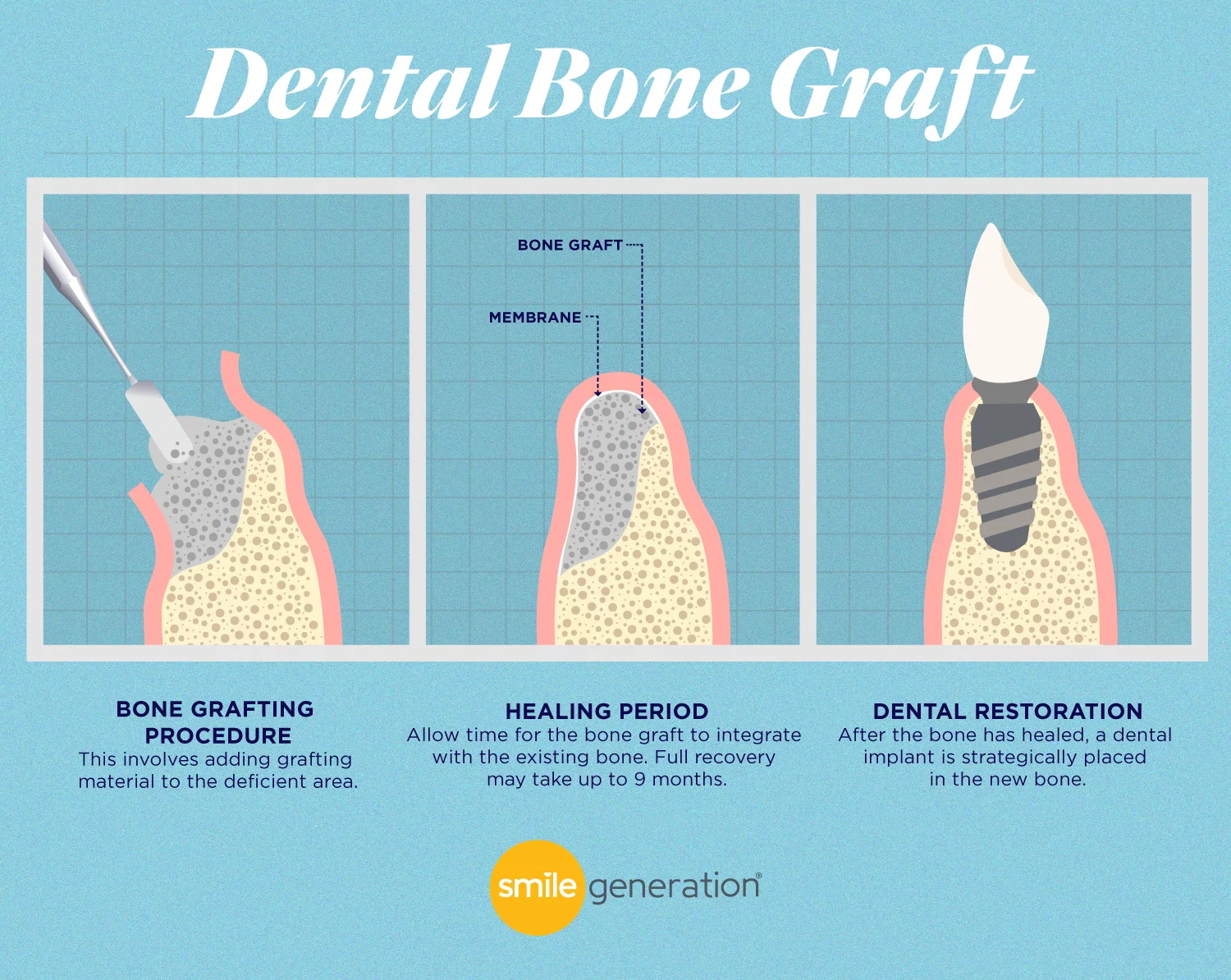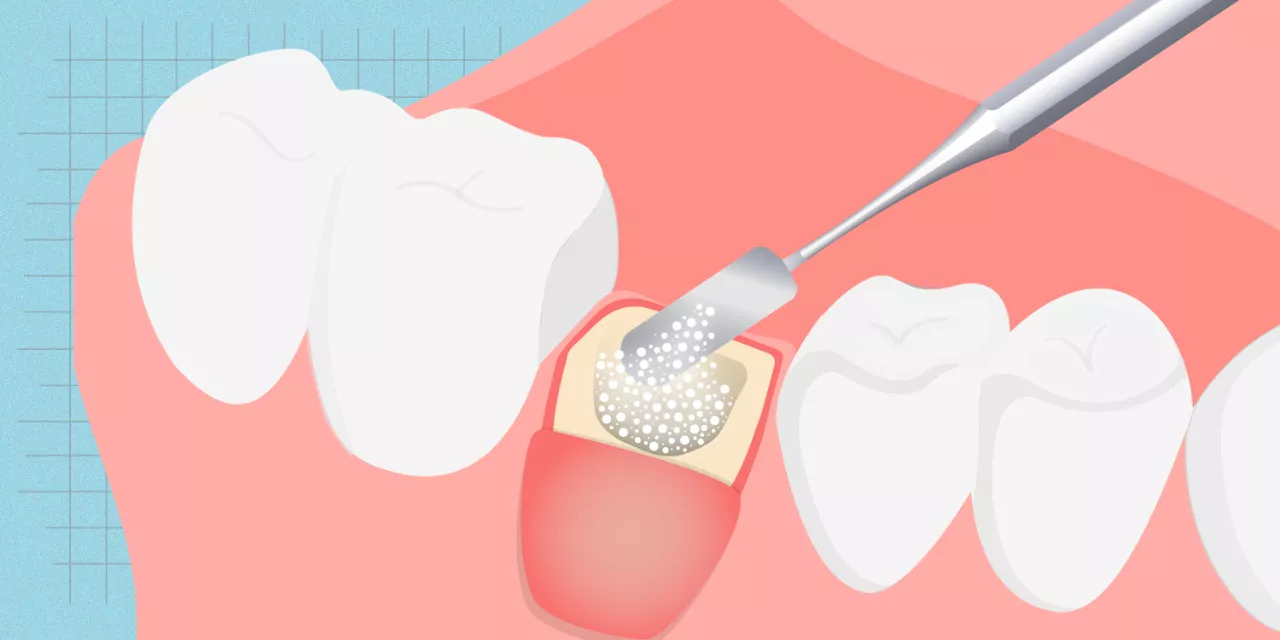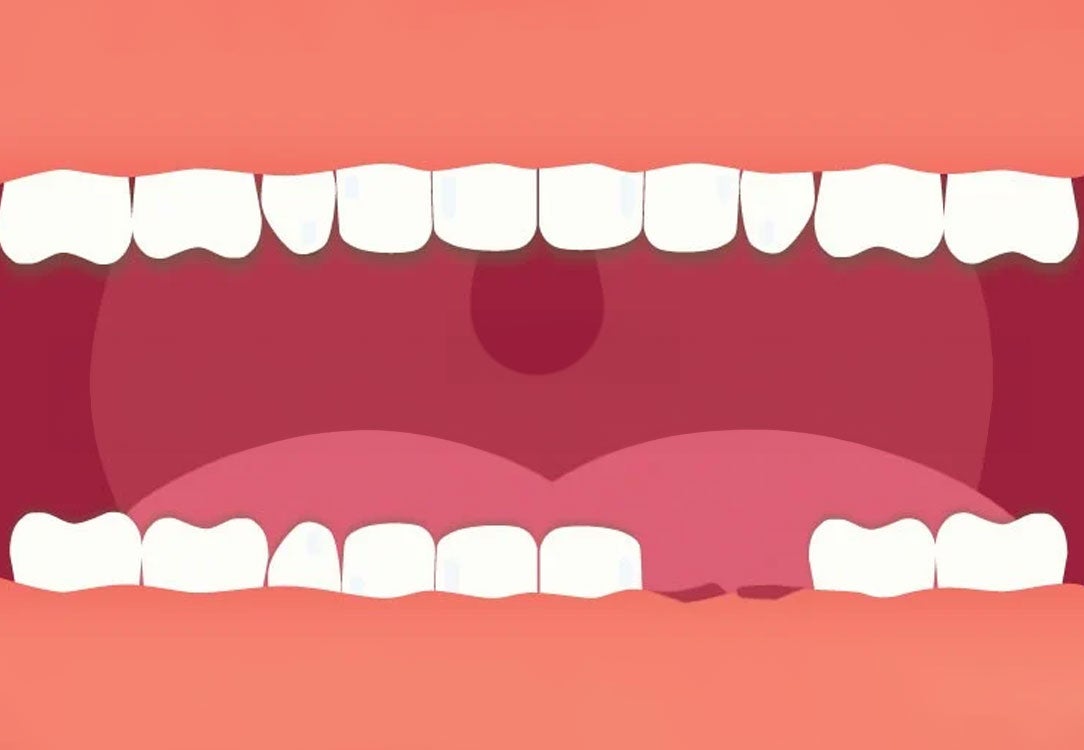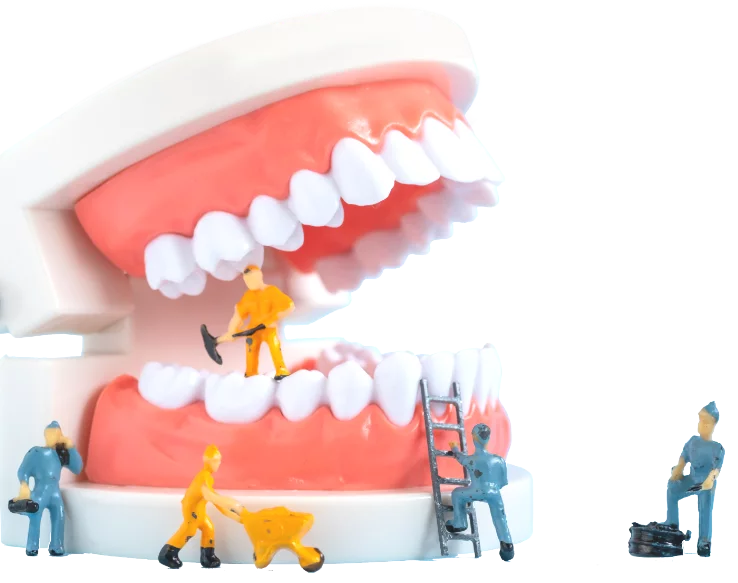The elements in your mouth - gums, teeth, jawbone - are all interconnected. Each one can have an impact on the other. If you have gum disease, for example, it can impact the health of your teeth and jaw. This interconnectedness means that addressing issues in your mouth can be complex and require multiple steps. One of the most complex dental problems to deal with is tooth loss due to issues such as injury, decay, or gum disease.
Losing a tooth as an adult can lead to serious issues, regardless of whether you had a tooth extraction or an injury. The bone in your jaw provides stability to your teeth and mouth. When you lose a tooth - for whatever reason - your jawbone is left with a hole in it where the tooth root used to be. This can cause your jawbone to shrink down over time. If you do not address bone loss in your jaw, it can cause you to lose other teeth and have problems with your bite. You can address bone loss in your jaw by getting a dental bone graft.
What Is a Dental Bone Graft?
If you are dealing with consequences related to bone loss in your jaw, you may have started to learn about options for correcting it. A bone graft is a common solution for bone loss in your jaw. If you do not have experience getting a bone graft, you are likely asking, 'What is a bone graft?' A dental bone graft procedure is when the dentist places material on your jawbone to repair areas where bone loss has occurred.
Who Is a Good Candidate for the Bone Grafting Procedure?
The dental bone graft procedure is designed for anyone experiencing bone loss in their jaw - or is at risk for bone loss. If you have a tooth extracted, there is a void in your bone where the root of the tooth once was. If you do nothing to deal with that void, your jaw will eventually heal some, but your jawbone will experience shrinkage. In addition, the space left between your teeth can cause your surrounding teeth to start moving. A bone graft can add volume to the missing area of bone after an extraction.
A bone graft may also be an option if you have bone loss in your jaw because of gum disease. Chronic gum disease can eat away at your jawbone and lead to bone loss and tooth loss. Gum disease starts by affecting your gums but can make its way to the bone that supports your teeth. A dental bone graft can be used to restore the bone that was damaged by periodontitis. If you have bone loss due to periodontitis, you will need to work with a dentist to first address the gum disease, and then you can move on to getting a dental bone graft procedure.
Where Does the Bone for Grafts Come From?
A bone graft can come from a human donor (allograft), from bone in another area of your body (autogenous), from an animal source (xenograft), or from synthetic materials (alloplast). The type of bone graft you receive clepends on a number of factors, including what your dentist offers, what your insurance covers, and your specific needs. The most common type of bone graft available is the cadaver bone graft.
What Is a Cadaver Bone Graft?
A cadaver bone graft is a bone graft that involves placing bone from a human cadaver in your jaw. A cadaver bone graft is also referred to as an allograft. The American Dental Association defines allograft as a 'graft of tissue between genetically dissimilar members of the same species. It is common for dentists to recommend using cadaver bone as a graft material.
Cadaver bone grafting pros and cons can be summed up quickly. The pros of the procedure far outweigh any potential cons. The bone graft procedure can restore bone that you have lost in your jaw and make it possible for you to get a dental implant. Some people feel uncomfortable about the thought of using caclever bone. The process inclucles getting bone from a bone bank that has processes in place to ensure the safety of the bone.
The are several types of bone grafts, including socket preservation bone graft, rickge expansion bone graft, and sinus lift Each type of bone graft is done with the same primary goal - to restore bone that was lost. The type of bone graft that is right for you will depend on the cause of your bone and/or tooth loss.
Socket/Ridge Preservation Bone Graft
This type of bone graft is done in conjunction with a tooth extraction. If you get a socket preservation bone graft, your dentist will prepare to do the bone graft procedures immediately following your tooth extraction. This type of bone graft is designed to fill in the void in your jawbone caused by removing a tooth.
Ridge Expansion Bone Graft
Significant bone loss can occur if you go for an extended period of time with missing teeth. The volume and width of your jawbone can decrease to the point where it cannot support dental implants or clentures. A ridge augmentation bone graft is designed to increase the width and volume of the jawbone to allow for further restoration.
A sinus lift bone graft is a process designed to address tooth and bone loss in the area of your mouth that sits directly below your sinuses. Your sinus can drop down into the space where your tooth roots once were if you have missing teeth in the upper back portion of your mouth. This is a problem if you want to get dental implants because the implants cannot be placed into your sinuses. The sinus lift bone graft is a two-step process that involves lifting the sinuses and then placing a bone graft, so they remain in their place.
Who Is a Good Candidate for a Dental Bone Graft?
If you are living with missing teeth - or need one or more teeth extracted - then you may be a good candidate for a dental bone graft. It is important to get your oral health on track if you want to get a bone graft. Periodontal disease can cause damage to your jawbone and cause you to need a bone graft. However, your dentist will want to see that you have the gum disease uncler control before performing a bone graft. If you are willing to work with your dentist and make any necessary changes to get your oral health on track, then you may be a good candidate for a dental bone graft.
Dental Bone Grafting Procedure
There are some general aspects of the dental bone grafting procedure that are the same across the board. It is important to remember, however, that your situation is unique, and you will need to talk to your dentist to understand exactly what will happen during your procedure.
The bone grafting procedure can typically be completed in a dentist’s or oral surgeon’s office. The steps for the procedure include numbing the area with a local anesthetic, cutting an incision to expose the jawbone, adding the grafting material to the jawbone, and then closing the incision with stitches. A straightforward bone grafting procedure can be completed in less than an hour.
As with any dental procedure, there are both risks and benefits. You may experience some discomfort after the procedure. There is a small risk of infection, gum problems, and the possibility that the bone graft fails to do what was intended.
The benefits of a bone graft procedure are that you will regain the bone volume in your jawbone and move forward with restorative options like dental implants. A bone graft is an important first step in restoring the look and function of your smile.
Is a Bone Grafting Procedure Painful?
Your dentist will apply a local anesthetic to the area of the bone graft. This will prevent you from feeling pain in that area during the procedure. If you are feeling anxious before the bone graft, the dentist can also provide you with sedation through nitrous oxide, oral sedation, or IV sedation. The local anesthetic combined with the sedation will help you stay comfortable throughout the procedure.
How to Prepare for a Bone Graft
You will work with your dentist to prepare for a bone graft. The first step is to get your gums and mouth as healthy as possible. If you are dealing with gum disease, for example, you must get that under control before you get a bone graft. The good news is that a top-notch dentist will help you with the process of preparing for your bone graft procedure.
Dental Bone Graft Healing and Recovery
It is a good idea to learn about what to expect after a dental bone graft. If you are facing a long recovery, you need to know to make preparations in other areas of your life.
How long does a bone graft take to heal? Dental bone graft healing stages include the healing of your gums from the incision and the healing of the grafted area. In the bone graft healing stages, the incision in your gums will heal quickly – usually within a couple of weeks or sooner. Tooth extraction bone graft healing will take more time. The area where the grafting material is applied takes more time to get back to normal – sometimes as long as nine months.
Aftercare for a bone graft is mainly about caring for the incision and being careful about what you chew on. Maintaining a high-quality oral care routine will keep your mouth and incision clean. If you can, chew on the opposite side from your incision until it is healed. You also need to be careful about what you chew on after the incision heals to give the bone graft time to heal.
Dental Bone Graft Side Effects
As mentioned above, the potential side effects of a dental bone graft are minimal. However, there is a risk for infection, bleeding, issues related to anesthesia, and potential nerve damage with any surgical dental procedure. Your dentist can help you more fully understand the bone graft side effects as you prepare for your procedure.
The cost of a bone graft procedure will depend on several factors, including:
- The type of bone graft you need
- The dentist you choose
- What is covered by your dental insurance
You will have to work with your dentist and insurance provider to find the exact cost of your dental bone graft procedure. If you need help with the cost, take a look at the dental plans and financing available through Smile Generation.
Find an Oral Surgeon Near You to Talk About Dental Bone Grafting
If you're new to your area and you're wondering how to find a trusted dentist near me, you can find an oral surgeon near you with the help of the Find a Dentist tool from Smile Generation. This tool allows you to search based on location and specialty so you can find a local oral surgeon who can do the bone graft procedure and get you on the path toward restoring your smile.
Find your trusted, local dentist today!
- https://jada.ada.org/article/S0002-8177(15)00245-7/fulltext
- https://www.mouthhealthy.org/~/media/ADA/Publications/Files/ADAGuide_GraftMaterialCollection_2021Aug03.pdf?la=en
Smile Generation blog articles are reviewed by a licensed dental professional before publishing. However, we present this information for educational purposes only with the intent to promote readers’ understanding of oral health and oral healthcare treatment options and technology. We do not intend for our blog content to substitute for professional dental care and clinical advice, diagnosis, or treatment planning provided by a licensed dental professional. Smile Generation always recommends seeking the advice of a dentist, physician, or other licensed healthcare professional for a dental or medical condition or treatment.









